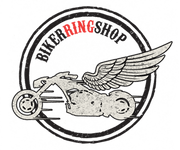The skull is one of the most popular motifs in men's accessories and jewelry. With a rich, millennia-long history, it is still actively used to adorn items of fashion and religion. The symbol of the skull unites divergent cultures and groups of people. Orthodox monks, pirates, Goths, bikers, rockers, hussars, pilots, Emos ... and many others make skulls part of their symbolism. But why is this seemingly intimidating image so appealing to different people?
In this post, we’ll trace the multitude of meanings inherent in skulls to understand the appeal of silver skull rings.
The Origins of Skull Symbolism
Skull symbolism is exceptionally complex and multidimensional. At a surface level, it invokes conceptualizations of mortality, death, and peril. However, if we look more closely, we can discover that skulls offer layers upon layers of deeper psychological symbolism. This symbolism may refer to such notions as sagacity, audacity, security, temporality, and the celebration of life itself.
Still, the most obvious meaning of the skull is death. Let’s see why it is so.
The skull is the part of the human body that is most likely to remain intact after death. At the same time, it contains the brain, the organ of thought and consciousness. Therefore, it comes as no surprise that the skull has always been a source of fascination and curiosity for humans. Cultures spanning millennia and continents have tried to understand its mysteries and secrets.
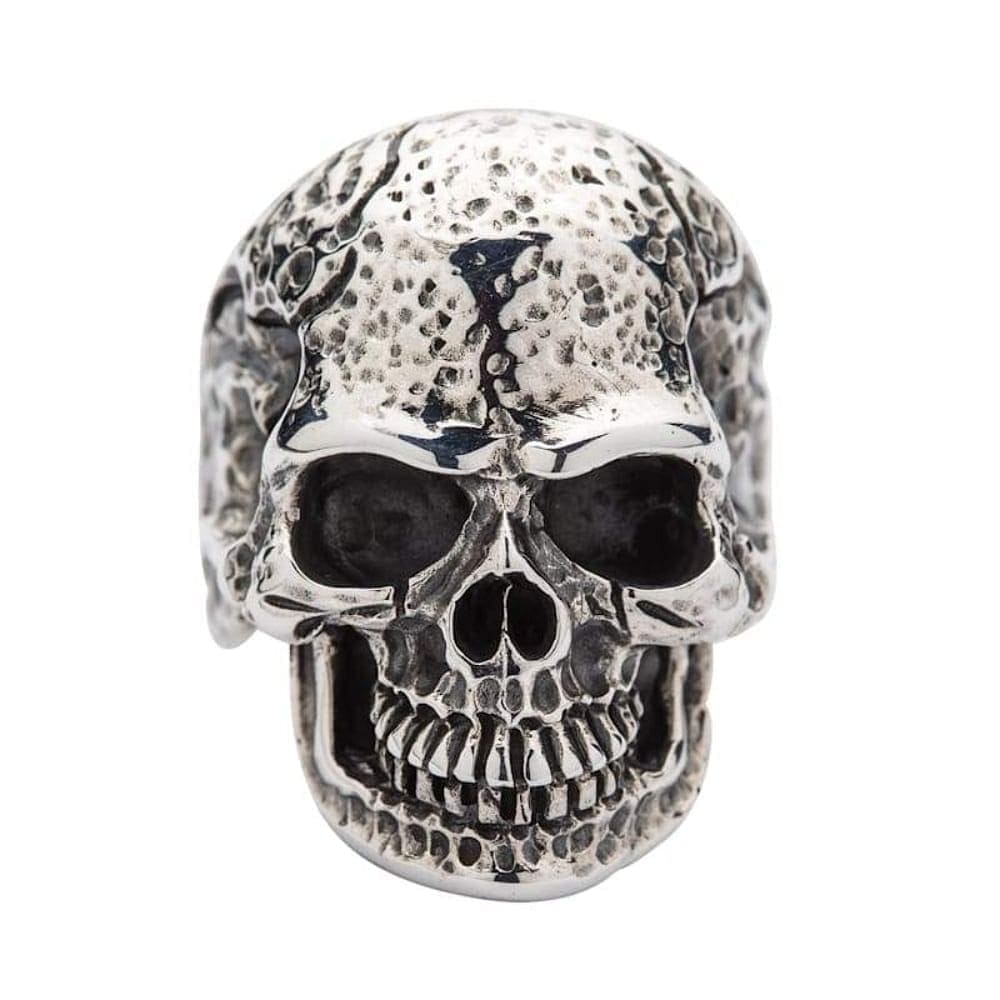
The earliest evidence of skull symbolism dates back to the Paleolithic era. When burying their dead, humans started using certain ritual practices. Some of these practices involved removing the skull from the body and placing it in a prominent position, such as on a stake, a pedestal, or a shrine. Presumably, these skulls were revered as ancestors, spirits, or deities. People also believed that they possessed supernatural powers and could have an effect on the living ones.
In some cases, the skulls were also decorated, painted, or carved with various motifs. The most common ones were animals, plants, and geometric shapes. These decorations were supposed to enhance the skull’s beauty, honor its owner, or express its identity and personality.
The Multifaceted Meanings Behind Skull Imagery
Over time, the meaning of the skull went beyond death and funeral rituals. Eventually, it became a symbol of an ultimate paradox since its meanings encompass both life and death, positive and negative aspects, fear and courage. To many, it is a symbol of contrast and balance, as it reflects the dual nature of reality and human life.
Different contexts and cultures interpret the skull differently. For example, in Hinduism and Buddhism, it is a sacred symbol of enlightenment and compassion. In Celtic and Aztec cultures, it is linked to ancestry, heritage, and the world of spirits. Modern subcultures, such as gothic and punk, view skulls as a means of self-expression and rebellious sentiments.
Skulls As Symbols of Supreme Wisdom
Skulls frequently signify ultimate knowledge and intelligence, far beyond common comprehension. Unlike a living face, the skull’s bare bones and empty eye sockets indicate receptiveness to truths that defy previous schools of thought. The skull here represents advanced thinking where old assumptions fall away so that newer philosophies can form in their place.
In antiquity, skulls were often found on philosopher desks. They were there to represent their openness to new ideas and elevation of the mind. The skull also appears in Alchemical engravings to symbolize the highest attainable wisdom - the Philosopher's Stone.
Echoes of this symbolism can be seen in contemporary contexts as well. Today, skulls appear alongside symbols of high intelligence in accessories and jewelry for scientists, thinkers, academics, detectives, and innovators. Similarly, the skull and crossbones fused with engineering symbols decorate products aimed at coders, gamers, and hackers. In this context, it represents mental dexterity and trailblazing against the mainstream.
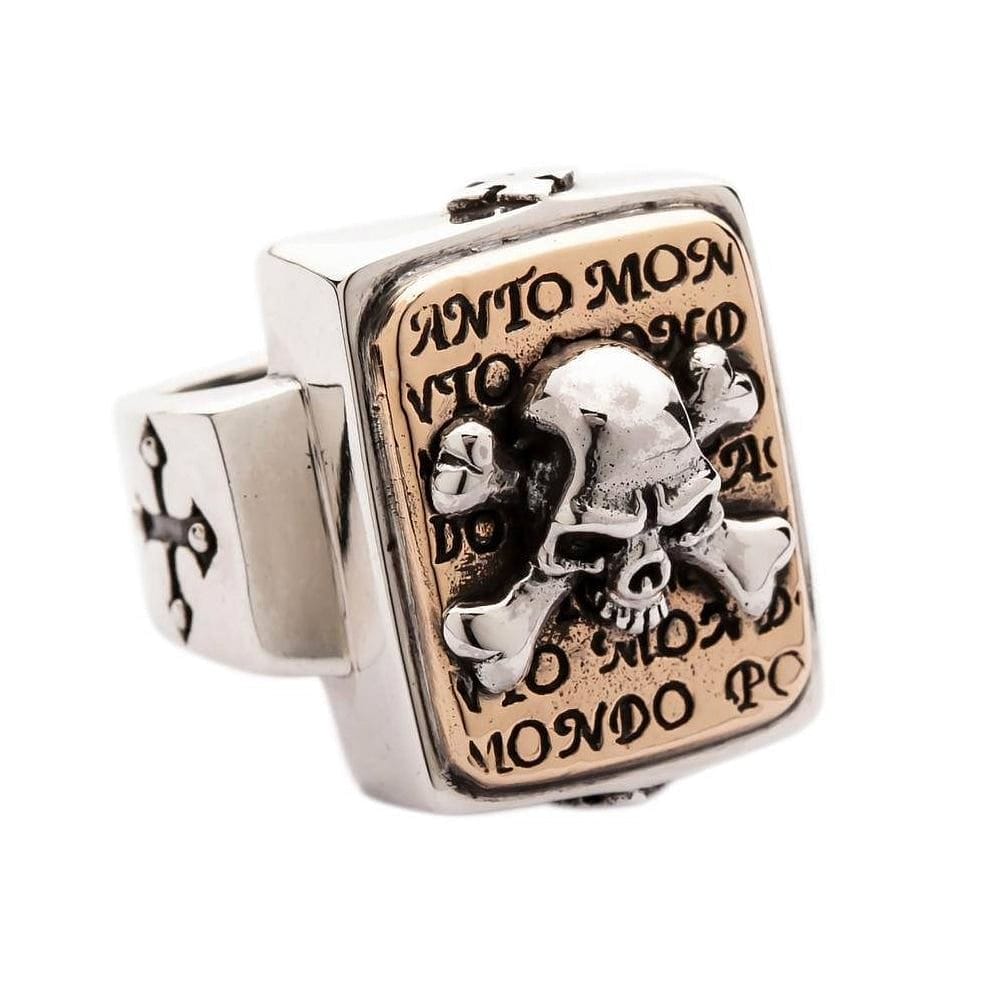
Courage Against All Odds
Despite their close affiliation with darkness and foreboding, skulls also take on the meanings of great courage, resilience, and resistance to danger. Basically, they represent the ability to face peril with stalwart audacity.
Skulls were frequently depicted in warrior shields and knight family crests to showcase fearlessness, on one hand, and suffering and potential death, on the other. The fusion of elegant regalia with skull motifs announced the ability of these warriors to maintain composure and fulfill their roles amid clashing swords.
In today’s world, the meaning of courageousness against all odds still shines through military insignia featuring skulls. From official banners of military units to militant groups and even private armies, the skull is still the symbol of willingness to fight for the right cause. Perhaps the most famous military skull, Totenkopf (Dead Head) was on the banners and awards of the undefeatable Prussian army. After Prussia became part of Germany, the symbol continued to live as the emblem of tank divisions and other units within the Wehrmacht. It was a great honor for the Allied soldiers to pick up trophies with Dead Head. Upon returning home, some of them joined biker clubs and began to display skulls not just as a symbol of their valor but also defiance.
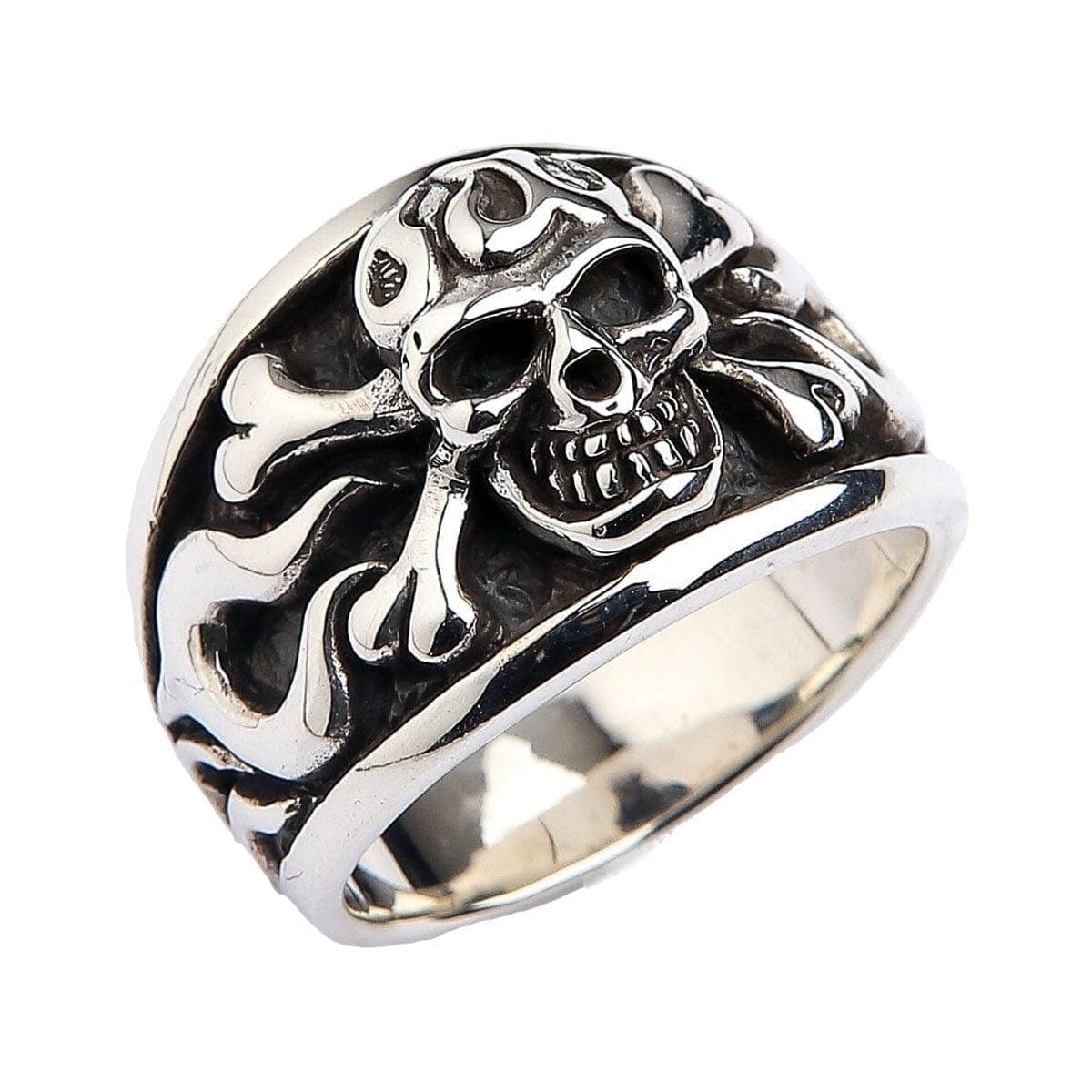
Ultimately, skulls became indispensable in punk rock merchandise, biker jackets, and counter-culture subcultures. These niche communities integrate skulls into their jewelry and outfits to declare defiance of cultural norms. And the same time, the symbol displays their determination to live their life on their own terms whatever obstacles life throws their way.
Equally, silver skull rings and other pieces of jewelry proclaim an individual’s resilience against hardship or overwhelming challenges. They are perfect illustrations of one’s skill to adapt to circumstances and conquer limitations.
Endings Bringing New Life
While skulls make us think of death, they have also long symbolized the idea that endings allow new beginnings.
Take Gothic art with skulls having red wings or growing from flowers. This imagery shows that when the body dies, the spirit lives on. Simultaneously, it can signify, that systems need to end for new ideas to start.

Numerous myths and legends tell stories of new life coming from skulls. For example, in Hindu mythology, the goddess Lakshmi emerged from a lotus flower growing from God Vishnu's skull. Symbolically, this denotes that creativity and prosperity can appear out of what seemed barren. The idea of death creating life is present in Aztec legends as well. They say that early humans made land by scattering the skulls of old beings after the great cosmic destruction.
But these ideas are not just a thing of the past. You can find them in modern literature and art. In Harry Potter, for example, young Thestrals are birthed from dead parental skulls. Only the keenest students could see these magical creatures. Overall, they symbolize the triumph of death over loss and suffering.
All these stories teach us one thing - endings allow new beginnings. Death makes room for life and it is a natural part of nature's cycle.
Memento Mori Reminders to Seize the Day
The Latin phrase "Memento Mori" translated as "remember you must die" is inseparable from skulls. In art and mourning jewelry, skulls served to remind people that life goes by quickly. Instead of focusing on the past, they suggest to live the present.
When it comes to Renaissance Memento Mori paintings, skulls, oftentimes ornate ones, adjoin the symbols of fading life. These are burnt-out candles, wilting flowers, and emptying hourglasses, whose mission is to represent time running out. This symbolism was to say physical life ends swiftly with no second chances, so each moment matters. People should fully live rather than waste time.
Modern silver skull rings continue this theme showing skulls with clocks as well as lotus and rose symbols. The message is still the same: life flickers briefly, so switch from meaningless to meaningful things before time runs dry.
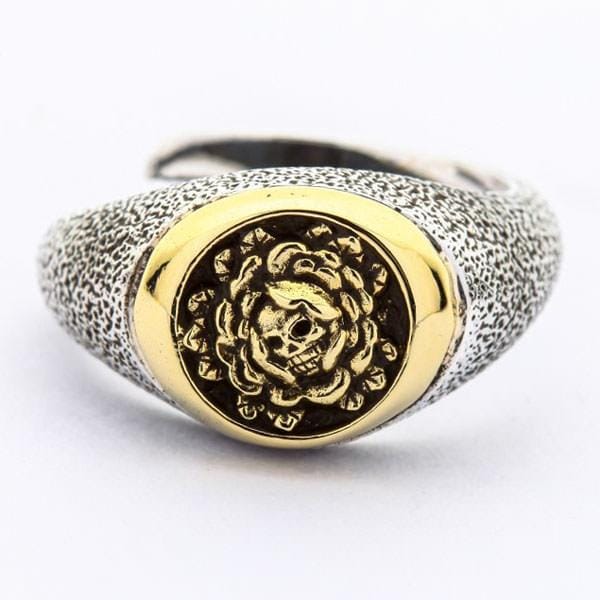
Skulls Providing Protection
Although skulls are best known for representing death, they can simultaneously protect from demise and harm.
People have used skull-themed objects like masks, carvings, and amulets in homes or as wearables to ward off negative energy and evil spirits. Mystics, both ancient and modern ones, note the powerful vibrations of crystal skulls. They believe that these can create a positive aura deflecting harmful energies.
On top of that, wearing skulls can signify a commitment to personal healing and self-love. This symbol can help positive energies radiate outward and stop the harmful impact of negativity caused by unprocessed trauma or inner turmoil. Simply carrying a skull-themed item can act as a security measure against disruptive energies.

Beyond the supernatural aspect, however, skulls serve as a reminder of personal power. They encourage people to rewrite limiting narratives and break free from external influences. The lesson here is to stand tall and strong so that negativity has no way to knock you down.
How Skulls Mean Different Things to Different Cultures
The meanings of the skulls are dissimilar not only on the timeline but also in different regions of the world. Next, we’ll explore how different world cultures interpret skull symbolism.
In Western culture, skulls are the number one symbol of death, danger, and fear. For this reason, they often serve as a sign of caution or threat. For example, the notorious skull with crossbones symbol is often used to indicate poison.
That being said, in recent years, skulls have also become more fashionable and artistic. You can see them more and more often in clothing, tattoos, jewelry, and various accessories. Flirting with death is all the rage today.
In Hinduism, skulls are common attributes of ancient gods and goddesses. For instance, Nataraja, a form of Shiva, wears a necklace of skulls. This particular symbol shows the cycle of life and death. Such a visual is supposed to remind people that nothing in this world lasts forever. Hence, it urges them to concentrate on the spiritual aspects of life.
Skulls are frequently used as decorations around gods and goddesses, such as Munda Malas, in Buddhism to symbolize emptiness. It doesn’t mean, however, that this emptiness is the outcome of loss or death. Rather, it is the idea of nothingness, which is just another dimension of the universe. It implies that all experiences are neutral and that our perception of them is subjective.
In the Celtic culture, skulls as the source of power and soul. The three major holes in the human skull – eye sockets and the mouth - are thought to be magical. Each hole individually is linked to magic, transformation, and creation, and together, they form a triangle. This triangle, which is also a sacred shape, showcases a connection between mundane and cosmic. Apart from that, the circular shape of the skull reflects the cyclical nature of life and gaining knowledge.
In Aztec culture, skulls are not just symbols of life and death, but also the liberation of the fear of death. Human craniums were arranged in a special way in temples as offerings to the gods. Today, skulls are still honored in Mexico during “Dia de Los Muertos”. Basically, they became art objects, so-called sugar skulls, painted and decorated with flowers and geometrical motifs.
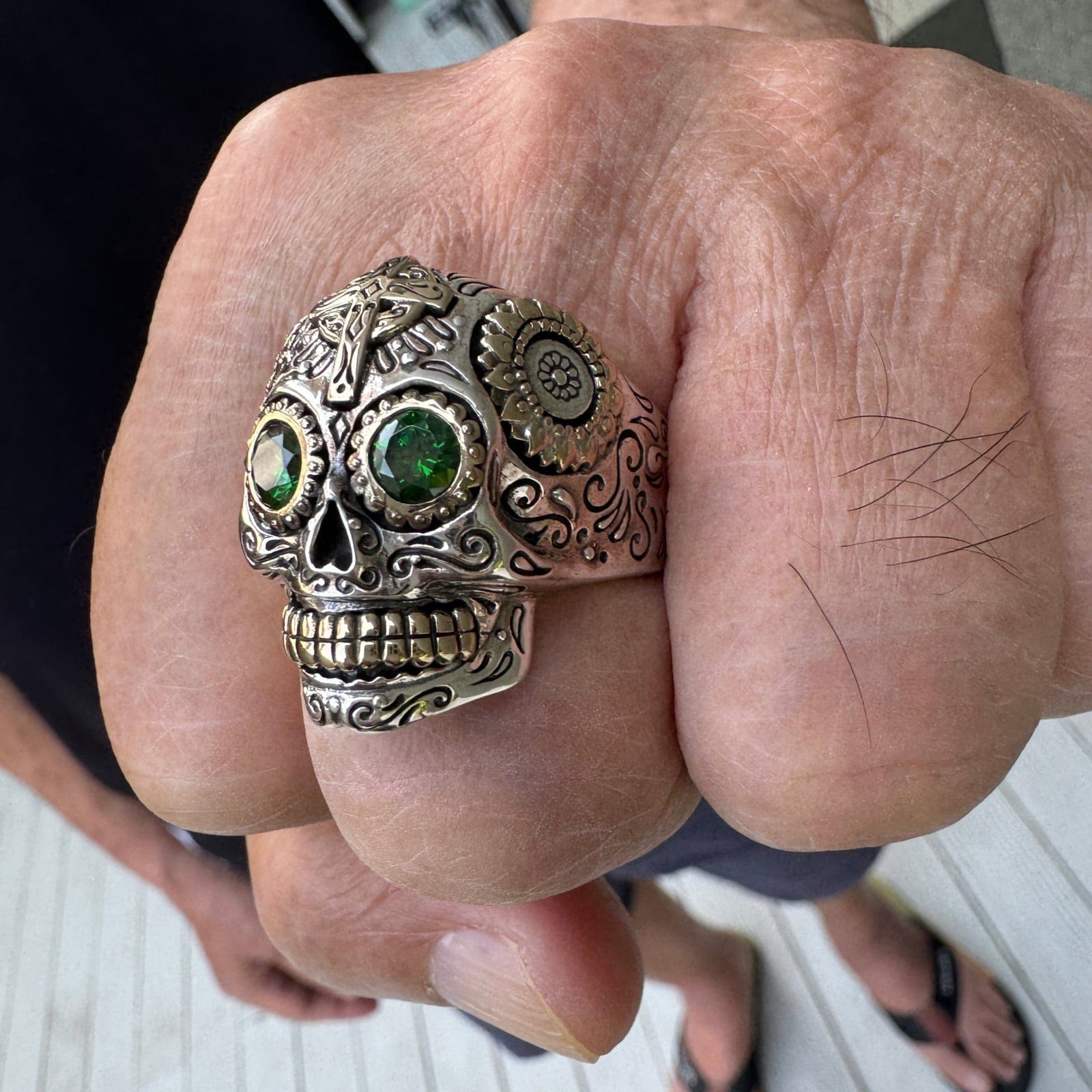
When it comes to Christianity, the skull represents mortality and the connection between the physical and spiritual worlds. In icons and religious artwork, saints often hold skulls as a symbol of their detachment from earthly troubles and trust in divine wisdom.
Silver Skull Rings in Biker Culture
For motorcycle riders, silver skull rings are not only a fashion choice, but also a cultural statement. With these pieces of jewelry, they can express their identity, values, and way of life. They are also a way of communicating with other bikers and the rest of the world.
As we have already mentioned, skulls represent death, danger, rebellion, and defiance. They have been used by various military units, pirates, outlaws, and revolutionaries to intimidate their enemies and express their disregard for authority. All these meanings strongly resonate with the biker subculture. To many, motorcyclists are outsiders, rebels, and nonconformists who live by their own rules and values. Bikers accept this representation. Apart from that, they boast a strong sense of loyalty, brotherhood, and freedom. Skulls reflect their attitude of living on the edge, facing danger, and challenging the status quo.

With the same symbol, they have a chance to express equality and solidarity within their community. Why differentiate someone based on their background, race, gender, or class, if we are the same under the skin? One day, we will all end up as a skull and bones. In the end, skulls are the ultimate reminders of their mortality and bond with fellow riders, especially those who have died on the road or in other circumstances.
